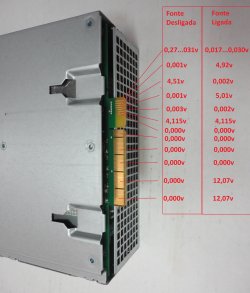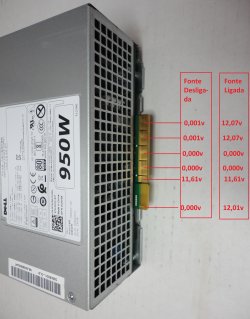We don't really have enough information.
Is the replacement motherboard and exact model replacement? This is really important because Dell is notorious for using proprietary (non-ATX compliant) components.
Are the images above of the same PSU? This matters too since again, Dell is notorious for using modified or "proprietary" parts. That means if the motherboard does not comply with the industry standard ATX Form Factor, it is likely the original PSU does not either. And that means any replacement PSU MUST come from Dell.
Why did you replace the original motherboard? Where are you seeing these amber and white LED blinks?
While possible, it is not likely the new motherboard faulty.
Conclusively testing power supplies is impossible for the normal user because that takes sophisticated (and expensive) test equipment and the knowledge and skills to use them. You cannot
conclusively test a PSU with a multimeter because proper testing requires measuring under a variety of realistic loads, and most multimeters cannot test for ripple and other AC anomalies riding the DC voltage.
So for most users (amateurs and pro alike), swapping in a known good supply is typically the best way to test a PSU. The problem there is, once again, Dell frequently uses proprietary PSUs.

That leads us to PSU cabling. While Dell does not typically use proprietary voltages, they are known for using cables that are NOT wired according to the ATX Form Factor standard. This means, if not the correct proprietary PSU for the proprietary motherboard, the wrong voltage could be applied to the wrong pin on the motherboard and sadly, that could result in damage to the motherboard.







